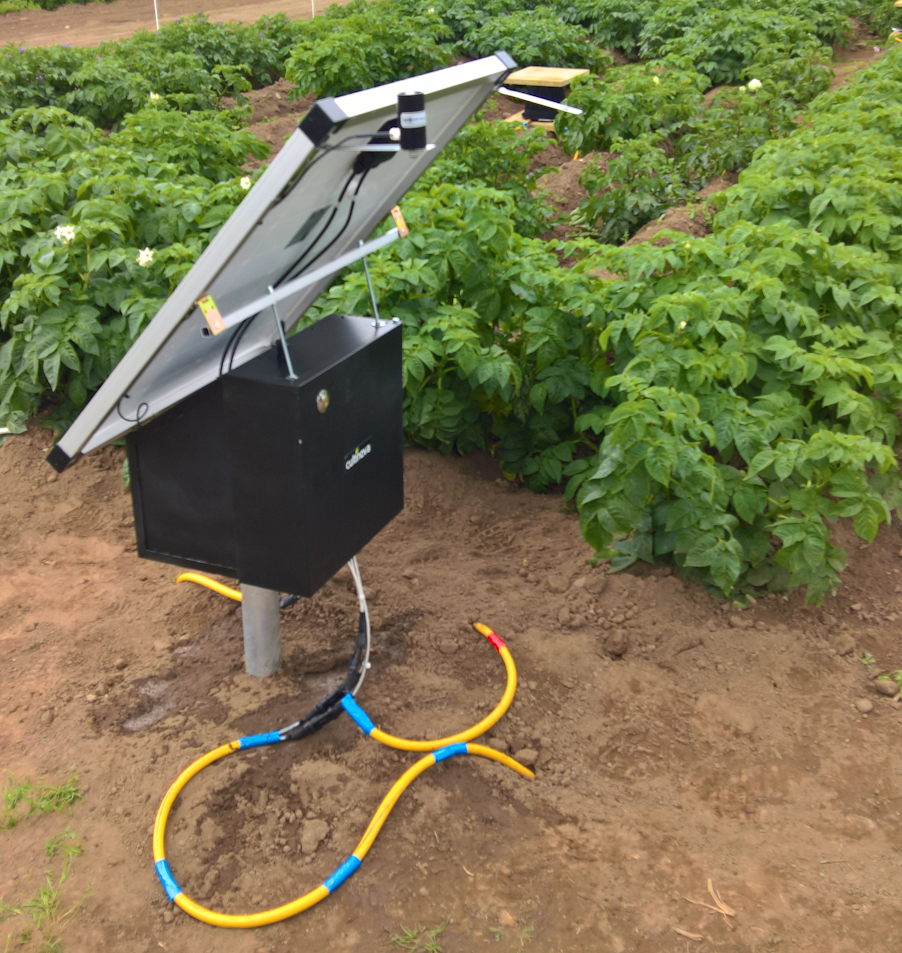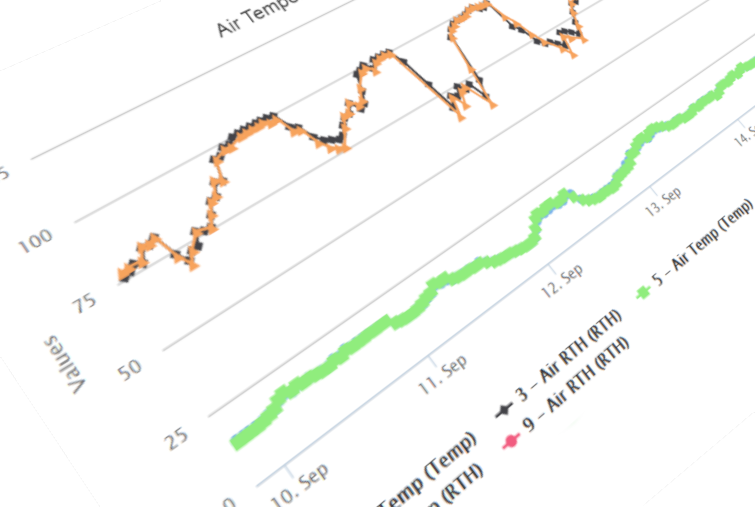Soil based carbon sequestration is of interest as a means of locking carbon dioxide (CO2) from the atmosphere in to soil to mitigate the effects of climate change.
Measuring net CO2 absorption and release in soils, particularly in relation to crops the soils support is important for improving understanding of CO2 exchange processes and developing theoretical models that can be used to predict the effects of carbon storage in soils on global warming.
In this project, CultinovaEDGE™ hardware was used to realise a custom in-field monitoring system that undertook precision CO2 measurements in soils supporting a potato crop over two summer growing seasons.
Hourly CO2 measurements were supplemented by soil moisture, electrical conductivity, temperature and pH measurements. Surface air temperature, relative humidity and Photosynthetically Active Radiation (PAR) were also measured, with all measurements being transmitted in real-time via a mobile Internet connection to a cloud-based data storage platform.
The resulting dataset was used by researchers at Newcastle University to advance their understanding of the interactions between carbon dioxide, soil, crops and tillage towards the goal of reducing the negative effects of farming processes on CO2 release to the atmosphere.







Due to the remoteness of the test site, this application required self powered and fully autonomous operation with mobile Internet connectivity. Furthermore, the utilised CO2 sensor for soil measurements was a unique bespoke unit manufactured specifically for this project by a supplier identified by the client, with the sensor having its own proprietary digital communications protocol.
As such, some adaption of CultinovaEDGE™ technology was required for this project - firstly modification of the hardware for solar powered operation and secondly production of a custom sensor interface module for attachment of the CO2 sensor.
In order to maximise the power use efficiency of the hardware, it was reprogrammed to enter a deep-sleep power saving mode for 45 minutes of its hourly measurement cycle. During this time, all functions were halted and all attached sensors powered off. Battery charge status was also measured and transmitted with other measurements to provide a continuous trace of batter health.
The hardware would then wake once per hour, initialise and check all sensors, take all measurements and communicate the measurement data to a cloud storage platform, this being provided by the client research team.
Some adaption of the software in the CultinovaEDGE™ hardware was required to enable it to securely communicate with the clients' own 3rd-party cloud data storage.
The system was operational over a six-month period, after which it was removed from operation, services and all sensors recalibrated. Based upon the success of the first measurement campaign, the measurements were repeated the following summer to generate a supplementary dataset to the first.
c/o Experior Micro Technologies Ltd
Sadler Bridge Studios
Derby
DE1 3NT
United Kingdom
c/o Experior Microtech GmbH
Fürstenrieder Straße 279a
81377
Munich
Germany
